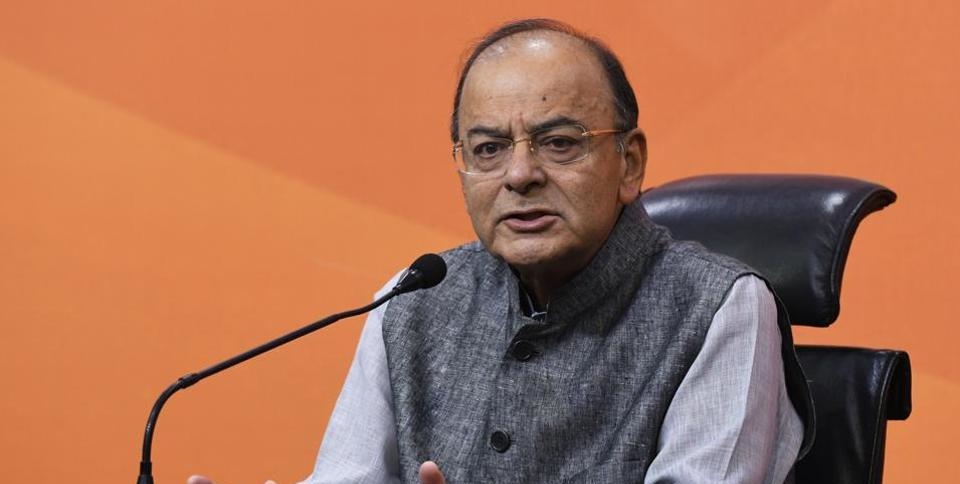Highlights of the Indian budget
February 1, 2018 | Expert Insights

India’s Finance Minister Arun Jaitley presented the government’s budget for the fiscal year 2018/2019. The budget has allocated billions of dollars for rural infrastructure. In addition, it has also unveiled an ambitious new healthcare programme that aims to provide healthcare for around 500 million poor.
The government has also stated that it expects the Indian economy to grow by 8%, which is more than what has been estimated.
Background
The Union Budget of India is the annual budget of the Republic of India. The Government presents it on the first day of February so that it could be materialized before the commencement of new financial year in April. Up until 2016, the government used to present on the last day of February but this was amended later. The budget is presented by the nation’s Finance Minister. The budget, which is presented by means of the Finance bill and the Appropriation bill has to be passed by both the Houses before it can come into effect from April 1, the start of India's financial year.
India is a developing economy. It is the world's seventh-largest economy by nominal Gross Domestic Product. It is also the third largest economy in terms of purchasing power parity (PPP). However, it ranks at 141 in per capita GDP (nominal). In June 2017, it was revealed that India’s economic growth had slowed to 6.1% in the fourth quarter ending March 2017 as compared with 7.1% in the previous quarter. The growth rate has further slowed down during the April-June period to 5.7% - a three-year low. The economic slowdown has been attributed to the effects from demonetization and the roll out of GST. The Goods and Service Tax is a value added tax, which is multi-stage and destination-based taxation on each stage of good and service production as well as generation.
Indian government has lowered the economic growth forecast for the country and noted that the nation is estimated to grow at 6.5% for the period between 2017-18. This is a four year low for the nation. The forecast was revealed ahead of the Union Budget.
Analysis
On February 1st 2018, Finance Minister Arun Jaitley presented India’s budget for the year 2018/2019. The focus of the budget this year was primarily agriculture, infrastructure and healthcare. The government has stated that it hopes to double farmer incomes by 2022 – the 75th year of India’s independence. In addition, it has also unveiled an ambitious new healthcare programme that aims to provide healthcare for around 500 million poor.
One of the key highlights of the budget was the new healthcare programme or “Modicare” as it has been dubbed. The government has stated that this will be the world’s largest state funded healthcare programme and that it will cover up hospital expenses up to Rs 5 lakh a year per family. The government will also establish 1.5 lakh Health and Wellness Centres centres under the Ayushman Bharat program. "We are all aware that lakhs of families in our country have to borrow or sell assets to receive indoor treatment in hospitals. Government is seriously concerned about such impoverishment of poor and vulnerable families," noted Finance Minister Arun Jaitley.
Given below are the other main highlights:
- Reduced Corporate Tax Rate of 25% has been extended to companies that have an annual turnover of over Rs 250 crores.
- With regards to the Income Tax Rates, no further changes have been made in the structure.
- For Salaried Employees Standard Deduction of Rs 40,000.
- Exemption on Interest Income for senior citizens has been hiked to Rs. 50,000.
- Government will contribute 12% of wages of new employees for all sectors. It has also stated that 70 lakh new jobs will be created.
- The capacity of airports will be expanded to 1 billion trips in a year.
- The government announced the long term capital gains tax (LTCG) on sale of listed securities on gains of over Rs1 lakh. Currently, (LTCG) from the sale of equity shares and equity-oriented mutual funds on which securities transaction tax (STT) has been charged on sell transactions are completely exempt from tax.
- Government has revised fiscal deficit to 3.3% of the nation’s GDP. It is above 3 % it has set last year. The government ended up breaching its deficit target in 2017/2018.
- CBEC will be renamed as Censor Board of Indirect Tax & Customs.
- E-Assessments to be the norm to minimise personal interaction with officials
- New schemes for enhancing agri production also needs to factor in irrigation bottlenecks.
Assessment
Our assessment is that there are many positives in the year’s budget which includes a proposed healthcare programme that could revolutionize the industry in India and provide vital medical care to millions. However, the onus is on the government to ensure that the budgeted amount is spent so that the less fortunate are benefitted. We also believe that the government has to define a clear execution roadmap for this project which on fructification will be the largest healthcare programme in the world.
We also feel that the initiative of the government to provide minimum support price to farmers is laudable. However, the challenges that plagued the implementation of similar proposals in earlier years still remain. There has been concerns that salaried middle-class population in the country do not specifically benefit from the budget. We believe that the biggest concern will be to manage the fiscal deficit which could in an election year go beyond estimates currently pegged at 3.5%.








Comments